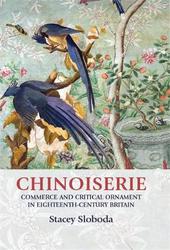
|
Chinoiserie: Commerce and Critical Ornament in Eighteenth-Century Britain
Hardback
Main Details
Description
In a critical reassessment of chinoiserie, a style both praised and derided for its triviality, prettiness and ornamental excesses, Stacey Sloboda argues that chinoiserie was no mute participant in eighteenth-century global consumer culture, but was instead a critical commentator on that culture. Analysing ceramics, wallpaper, furniture, garden architecture and other significant examples of British and Chinese design, this book takes an object-focused approach to studying the cultural phenomenon of the 'Chinese taste' in eighteenth-century Britain. It is essential reading for anyone interested in the critical history of design and the decorative arts in the period, and students and scholars of art history, material culture, eighteenth-century studies and British history will find a novel approach to studying the decorative arts and a forceful argument for their critical capacities. -- .
Author Biography
Stacey Sloboda is Associate Professor of Art History at Southern Illinois University -- .
Reviews'Sloboda's articulation of chinoiserie as "critical ornament," a versatile visual and material language used to express and reveal various commercial attitudes in Britain, from trading to manufacturing to buying and consuming, needs to be commended. It is an important contribution to a wider understanding of the complex nature and multi-layered meaning of chinoiserie.' Vanessa Alayrac-Fielding, Senior lecturer in British history, Universite Lille 3, The Art bulletin, CAA March 2016 -- .
|